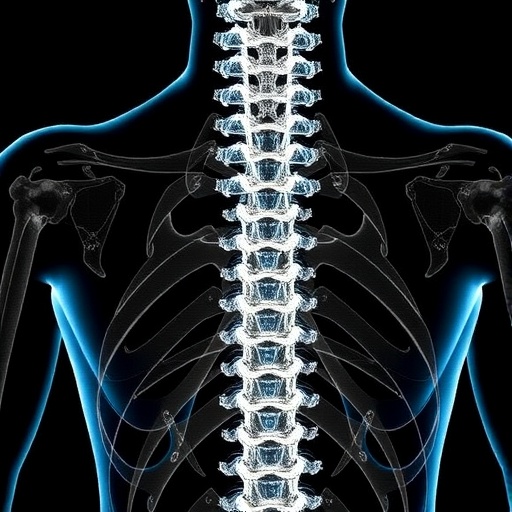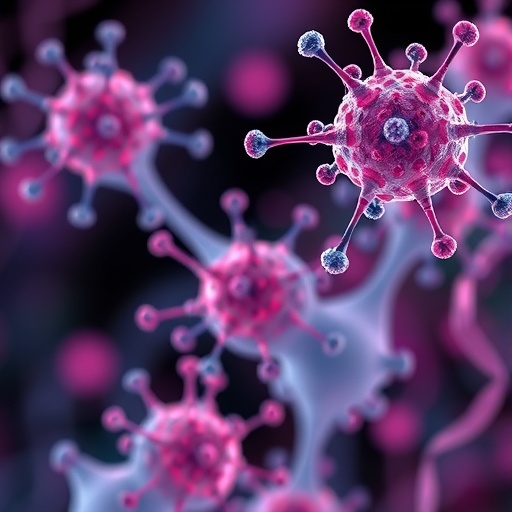Researchers from a multidisciplinary team have recently made groundbreaking advancements in the treatment of spinal cord injuries through the development of engineered thoracic spinal cord organoids. This innovative approach harnesses the power of organoid technology, which involves the cultivation of stem cells into miniaturized, self-organizing structures that mimic the complexity of actual organs. These engineered organoids have shown immense potential for transplantation, offering hope to countless individuals affected by spinal cord injuries, which can lead to debilitating effects on mobility and everyday functionality.
The process of creating these thoracic spinal cord organoids involves the meticulous manipulation of pluripotent stem cells, which have the unique ability to differentiate into various types of cells. By carefully controlling the environmental conditions, scientists can induce these stem cells to form 3D structures that resemble the thoracic spinal cord’s architecture. This intricate development is pivotal, as the organoids must replicate not only the structural integrity but also the functional aspects of the spinal cord to be effective in therapeutic contexts.
Once the organoids have been successfully engineered, the primary challenge lies in ensuring their viability and effectiveness once transplanted into the injured spinal cord. The research team implemented a series of rigorous preclinical trials to assess how well these organoids integrate with existing spinal cord tissue. This evaluation is crucial, as the capacity for integration plays a significant role in rehabilitating the damaged neural circuitry that is often lost during spinal cord injuries. Early results from these trials have been promising, demonstrating that the transplanted organoids can survive and thrive within the host organism.
In another fascinating aspect of this study, the researchers explored the potential functionality of the thoracic spinal cord organoids. They employed sophisticated testing methods, including electrophysiological recordings, to measure the electrical activity of the organoids post-transplant. This research represents a significant leap in understanding the functional outcomes associated with organoid transplantation, as it offers insights into how these engineered structures could restore motor functions that are typically compromised following spinal injuries.
The implications of this research extend beyond just functional recovery; they also carry moral and ethical considerations regarding the use of stem cells in regenerative medicine. By utilizing organoids derived from pluripotent stem cells, the researchers aim to address longstanding concerns about the ethical implications of stem cell research. With advancements in technologies and a growing understanding of cellular biology, scientists are forging new paths that prioritize safety and ethical considerations while still pursuing innovative treatments.
One of the defining features of this research is its potential to transform the current landscape of spinal cord injury treatment. Traditionally, treatments have been limited and often focused on symptom management rather than restorative approaches. The introduction of engineered organoids could revolutionize this paradigm, providing an avenue for truly transformative interventions that may restore function and improve the quality of life for individuals with spinal cord damage.
As the research progresses, the focus will also shift toward optimizing the delivery mechanisms for the thoracic spinal cord organoids. Researchers are exploring various biocompatible scaffolding materials that could facilitate integration and support the organoids during the healing process. The goal is to develop a method that not only encourages robust integration with the host tissue but also minimizes the potential risks associated with transplantation.
However, challenges remain as the team moves towards clinical applications. Ensuring that these organoids can be produced at a scale suitable for human treatment without compromising quality is a significant hurdle. Additionally, regulatory pathways must be navigated meticulously to bring these advancements from the laboratory to the clinic. Engaging with regulatory bodies at this stage can help streamline the eventual transition into human trials and ensure that the safety standards are thoroughly upheld.
This multidisciplinary collaboration also opens avenues for future research endeavors that can build off the foundation laid by engineered organoids. As scientists continue to explore the signaling pathways and genetic expressions involved in spinal cord development and repair, they may uncover novel strategies that enhance the functionality of the organoids. Future studies might investigate the co-culturing of organoids with other cell types, such as glial cells, to further mimic the native spinal cord environment and maximize therapeutic outcomes.
The excitement surrounding this research is palpable, especially among patients and advocates in the spinal cord injury community. With millions of individuals affected by various forms of spinal cord injuries, the potential of engineered thoracic spinal cord organoids to facilitate recovery and restore mobility represents a beacon of hope. As scientists delve deeper into the complexities of spinal cord regeneration, the dream of producing effective, scalable treatments inches closer to reality.
Depth of knowledge within this field continues to expand with each study and each breakthrough. The tandem advancement of technology and neuroscience has the potential to usher in a new era where formerly insurmountable challenges concerning spinal cord injuries can be addressed with confidence and scientific rigor. As research continues, it will be essential to maintain an open dialogue with the wider community, ensuring transparent communication about the research’s findings, implications, and future directions.
The engineered thoracic spinal cord organoids represent a monumental shift in the approach to spinal cord injuries. Building upon the insights from this research, it may soon be possible to develop personalized treatments tailored specifically to an individual’s injury profile. This level of customization marks an exciting frontier in medicine, one that aligns with the growing trend toward precision healthcare.
In conclusion, the advancements in engineered thoracic spinal cord organoids highlight the immense potential of regenerative medicine to transform the lives of those affected by spinal cord injuries. As researchers continue to refine these organoids and optimize their integration into spinal cord repair strategies, the landscape of treatment options will undoubtedly evolve, paving the way for more effective, restorative therapies and offering renewed hope to thousands in need.
Subject of Research: Engineered thoracic spinal cord organoids for transplantation after spinal cord injury
Article Title: Engineered thoracic spinal cord organoids for transplantation after spinal cord injury
Article References:
Zhu, Y., Huang, R., Yu, L. et al. Engineered thoracic spinal cord organoids for transplantation after spinal cord injury.
Nat. Biomed. Eng (2025). https://doi.org/10.1038/s41551-025-01549-8
Image Credits: AI Generated
DOI: 10.1038/s41551-025-01549-8
Keywords: spinal cord injury, organoids, regenerative medicine, transplantation, stem cells, neural repair, thoracic spinal cord, personalized treatment, neurobiology, preclinical trials
Tags: 3D organoid structuresadvanced regenerative medicineengineered organoid technologyinnovative therapies for mobility restorationneuroregeneration researchpluripotent stem cell differentiationpreclinical trials for organoidsrehabilitation for spinal cord injuriesspinal cord injury treatmentstem cell cultivation techniquesthoracic spinal cord organoidstransplantation of organoids





